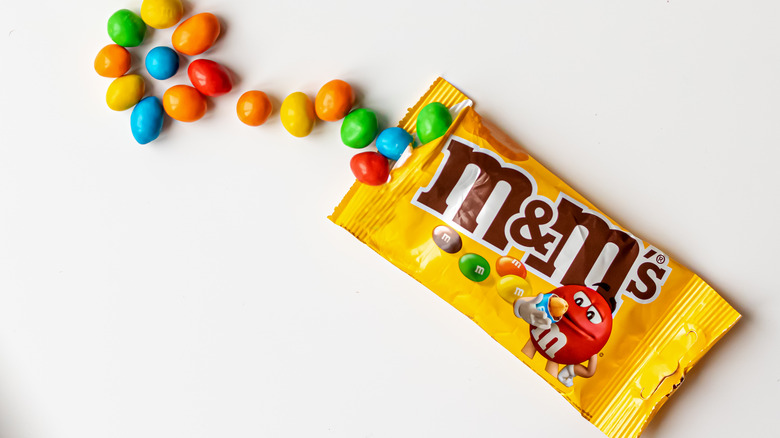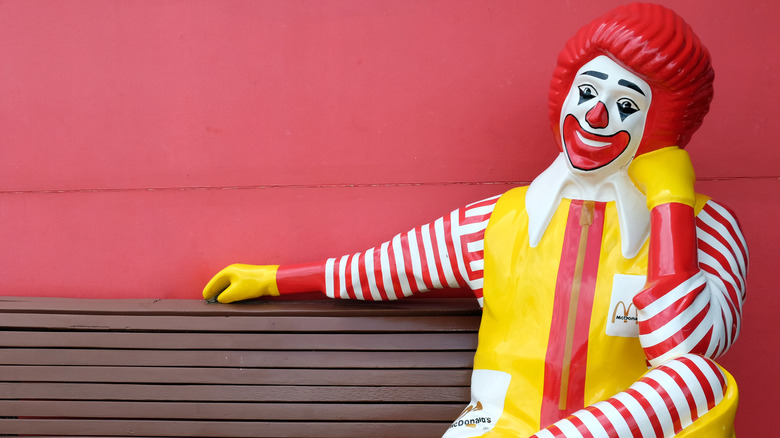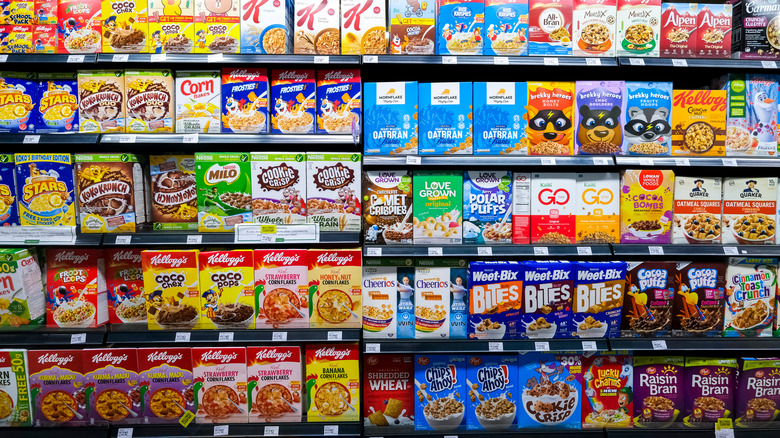The Fascinating Psychology Behind The Success Of Food Mascots
What comes to mind when you think of mascots? Perhaps it's Tony the Tiger happily scooping a spoonful of Frosted Flakes cereal, or maybe it's Mr. Owl licking a lollipop, wondering, "How many licks does it take to get to the center of a Tootsie Pop?"
Whatever the case, countless brands use mascots to promote themselves — especially companies that sell fast food, snacks, and beverages. As cute as they may be, you might be wondering if these marketing mascots actually work. When push comes to shove, animals and objects aren't people, so why would they have buying powers over us?
Interestingly, studies show that marketing campaigns that use mascots are 37% more likely to have a greater market share than those that don't (per Digital Humans). Still, only 4% of ad campaigns are using mascots, despite the difference they can make in our minds. But why do mascots have such an impact on their audiences?
Why food mascots are so successful
Food mascots have been around since the beginning of the advertising age, with Planters introducing its dapper Mr. Peanut with an eyeglass and a top hat back in 1916. The Planters website states that "he's your wingman during snack time or anytime" and "he will push you to be better because if you know better, you will be better."
According to Medical Spark Neuro, humans are prone to anthropomorphism, which is when people assign human-like characteristics to animals and inanimate objects. Some studies suggest that humans are apt to do this from birth, hence why babies and children love cartoons with talking animals, cars, food, etc. It's creative, fun, and relatable, as we understand human behavior best. This means that when a tiger starts telling you why you should eat a delicious, sugary cereal, you listen (probably more than you would if a human were telling you).
What's more, other studies find that anthropomorphism undermines self-control. For example, the Journal of Consumer Research found that people feel more comfortable eating foods they would normally avoid when it's marketed as an animal or objects with a friendly face. After all, who can say no to a Pillsbury cookie when it's coming from a giggly blob of dough?
The most famous food mascots of all time
Naming all of the food mascots to exist would be impossible, but some successful ones include the Kool-Aid Man, McDonald's gang (Ronald McDonald, the Hamburglar, and Grimace), M&M's "spokescandies," Trix the Rabbit, Honey Nut Cherrio's BuzzBee, Starkist's Charlie the Tuna, and so many more. Every mascot has a personality, which is why we're so drawn to them. Giving food a face and mouth helps us relate to the product, allowing us to feel a deeper connection to the food so we can associate it with ourselves (per The Takeout).
Now that you know the buying power of food mascots, which ones are most likely to get you to let your guard down? Whether you're browsing the grocery store or driving down the highway, chances are you'll run into a handful of famous food mascots encouraging you to buy and eat their products.


